The definitive 2023 OWL meta study guide
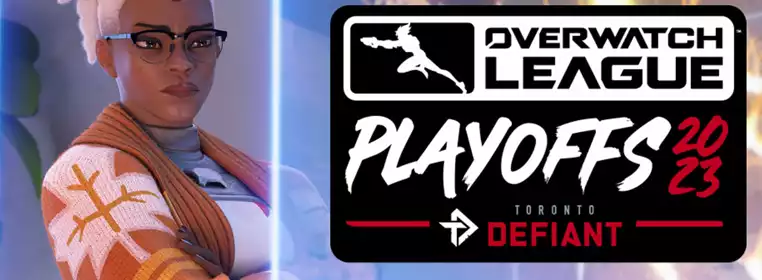
The 2023 Overwatch League playoff bell has rung, and class is well in session. We hope you've revised this summer for Flashpoint, as it will be on the exam.
However, the lion's share of this semester's course will focus on how to parse through the metagame and how to grasp some of the concepts you'll be seeing both in the play-ins as well as the playoffs.
Chapter 1: Hero equations
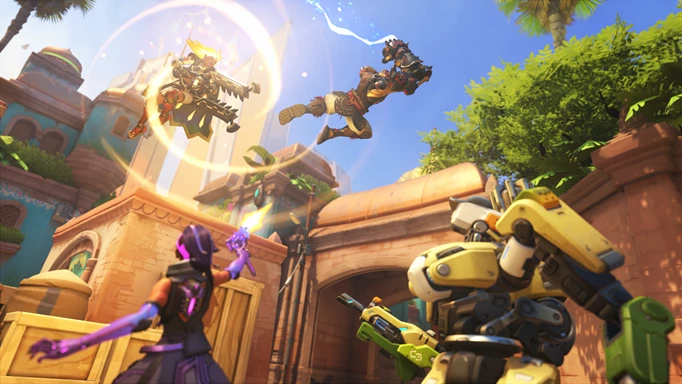
 Click to enlarge
Click to enlargeWhile concerns were warranted, we believe it safe to say that the introduction to the 2023 playoffs will likely be a very open metagame. With picks from Hanzo to Echo, Orisa to Sigma, and Illari to Brigitte being played, there are plenty of styles to choose from, at least as it stands now.
From the variance of the picks alone, we know a ton of dust has been kicked up, but will that last? For tanks, Orisa has seen a significant increase in playtime after her recent buff. Sigma has his place on more stationary maps with a complimentary high-ground.
Winston is a strong option for mobility. Wrecking Ball and Doomfist even have been more niche options for teams as the metagame settles. DPS-wise, there is much more room to experiment.
Picks like Torbjorn and Soldier: 76 have been welcome additions to compositions looking to 'catch' incoming Winston-based compositions. On the other hand, picks like Tracer, Echo, and Genji look to facilitate Overwatch's favorite scientist.
Then there are the more map-specific picks like Sigma, Hanzo, Reinhardt, and Widowmaker holding their own space on maps like Circuit Royal, Ilios, and Antarctic Peninsula. However, let this be a reminder, the Overwatch League map pool is set to change after the culmination of the 2023 Play-Ins.
This means as the dust settles and the metagame begins to more ridges, these more niche picks will likely go by the wayside for the most part. Currently, it feels as though comfort seems to be first priority as teams find their footing, especially in North America.
However, rest assured, stability will likely hit as we roll into playoffs proper. On that topic, one of Overwatch's newest additions may not have had a stable launch, but she'll be seen as the year comes to a close.
Chapter 2: Illari 101
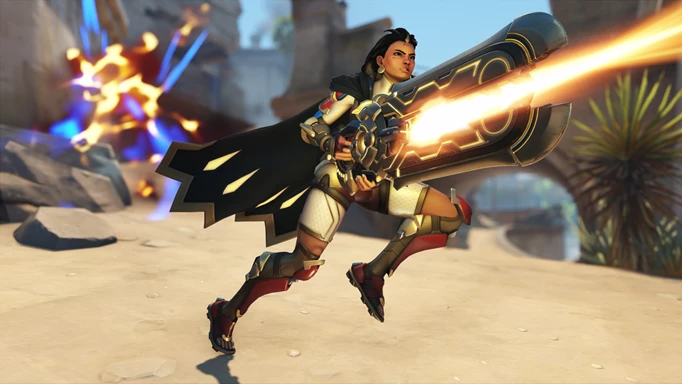
 Click to enlarge
Click to enlargeForget what you heard, Overwatch 2's newest hero is on the menu. Illari may be more tame after her nerfs, but she's still incredibly powerful. However, it's about how you use her that's more important than her breakpoints and tuning.
After a nearly two-minute-long fight to open their attack on Numbani A, the Boston Uprising needed something to go their way and fast.
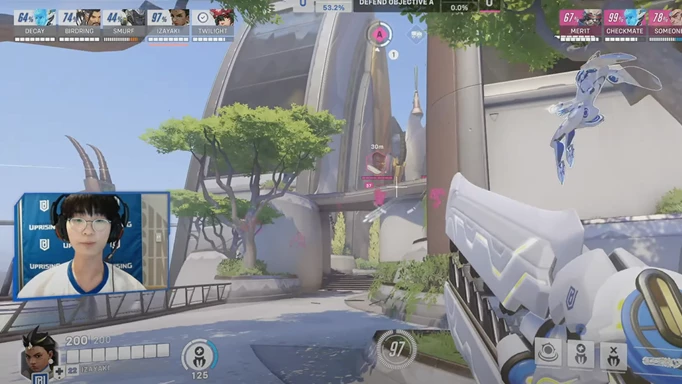
 Click to enlarge
Click to enlargeAs they posture to begin to sus out a fault in the Florida Mayhem's defence, we learn two things from Kim "Izayaki" Min-chul. Firstly, Illari can and sometimes should be taking a soft flank, especially for teams with playmaking supports.
Secondly, Izakayi has a much easier time finding that damage when compared to his counterpart in Oh "MAKA" Eun-seok. Part of the reason why there is such a discrepancy in the two Illari's ultimate charges is due to how each of them is positioned and which tank they're paired with.
For the majority of the first engagement, MAKA is taking shots when he can on the DPS whenever they poke their heads out.
MAKA also can't afford to leave his Sigma alone because the space he controls is like a cork to a wine champagne bottle. The second Ham "SOMEONE" Jeong-wan steps out of that high-ground chokepoint, the whole point floods.
Elsewhere, Boston's goal on this first push is to open as many angles as they can for their DPS and Illari to find pressure. They do this by juggling SOMEONE's attention as close to 180 degrees as they can.
This not only affords Izayaki the same targets as MAKA, but also opens up Izayaki to also farm his ultimate off Mayhem's tank. This not only puts the Uprising ahead in the Captive Sun department, but facilitating your Illari is going to increase your likelihood of landing an early pick.
This serves to showcase that Illari isn't just a heal-bot, she has much more play-making potential than it seems at first glance.
Another thing she brings to the table is a potent and flexible way to facilitate an anti-dive strategy.
The focus should be on Healing Pylon, not just because its healing per second is still very potent, but because it adds effective health to her team. In more simple terms, because the enemy has to deal with the pylon first, it buys Illari time to counter-play.
Past that, her individual damage output nears DPS numbers and she holds vertical mobility options and an ultimate that will become a fight-ender as teams become more comfortable with her. So long as we see teams defaulting towards Winston, Illari is not going anywhere.
Chapter 3: Philosophical differences
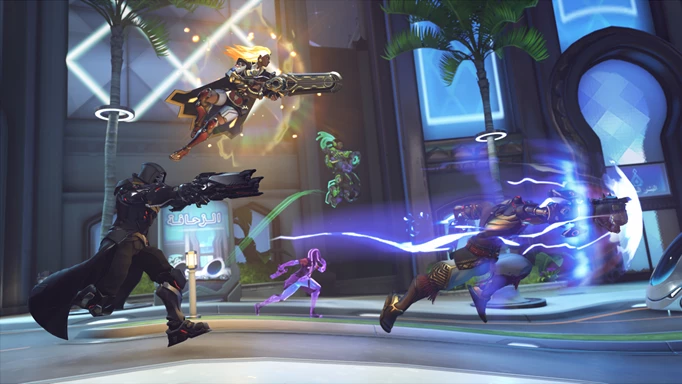
 Click to enlarge
Click to enlargeNorth America and the APAC regions in Overwatch have never seen eye to eye when it pertains to the metagame, and as we approach the 2023 playoffs, that law holds steadfast.
APAC remains as you'd expect they might. Most teams seem to have comfort with Winston as their spearhead with a cavalcade of DPS pick to saddle up alongside him.
However, in a strange twist of fate, some front runners in APAC look eerily familiar. Seoul Infernal, O2 Blast, and Dallas Fuel have found their way back to utilising Junker Queen very heavily.
This not only screams that they've shared quite a few practice sessions but that it's either been closed off or a rather new development. Our bet rests on the shoulders of the head coach of the Dallas Fuel, Yun "RUSH" Hee-won, as the professor to spur on this change of pace.
It is all too coincidental that the team most known for their Junker Queen play this season, for better or worse, has just somehow lucked into someone else doing their own homework. On the other hand, North America is much more of a grab-bag.
Teams like Florida Mayhem, Toronto Defiant, and San Francisco Shock have been supporters of the anti-dive composition that was previously reported by league insiders. This composition centres around being fairly immobile, but housing a ton of poke pressure that teams have had a hard time navigating.
Between Orisa's Fortify, Torbjorn, Bastion, Illari, and Baptise, there is no one solution for a dive composition to target. Neither is there a good way for a rush composition to always guarantee a viable map pick, at least not currently.
This has left those remaining loyal to picks like Winston, Tracer, and Genji at a loss. Closing the gap is tough, and as teams become more well-rounded with Illari in particular, that delta should increase.
This leaves us with some serious differences in philosophy. Both regions have some dive acceptance, while developments are taking shape, just in different ways. APAC leans far more into Junker Queen, whereas North America seems more prone to experimenting with Illari and how she fits into the support mold.
What this could lead to is something not too dissimilar to the beginning of the 2022 Overwatch League season, where there was a bit of a rock, paper, scissors style metagame. With so many styles being viable, natural counters on maps that facilitate them should emerge without everyone agreeing on a 'standard'.
Overwatch League's 2023 playoffs begin September 28th.
